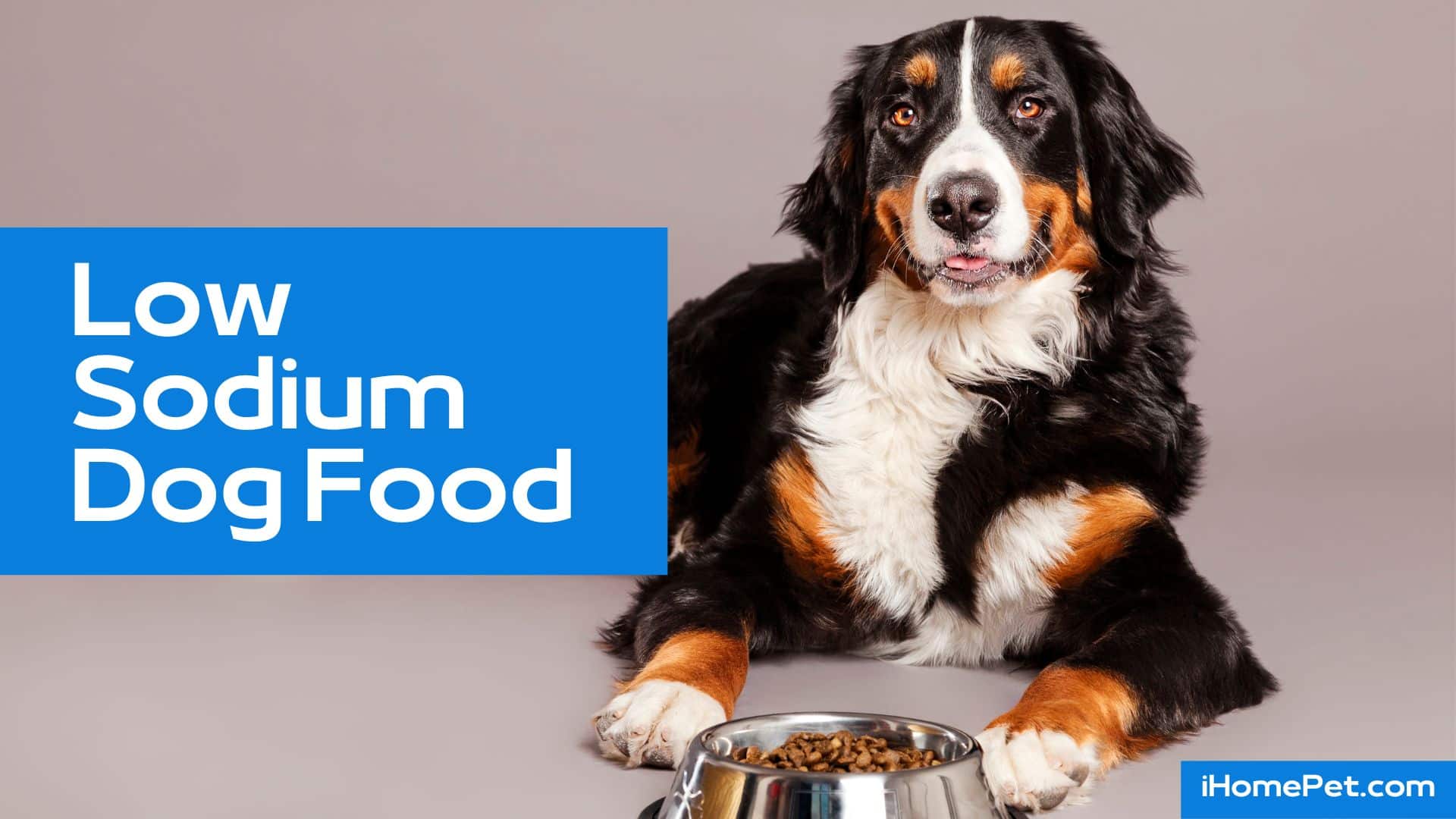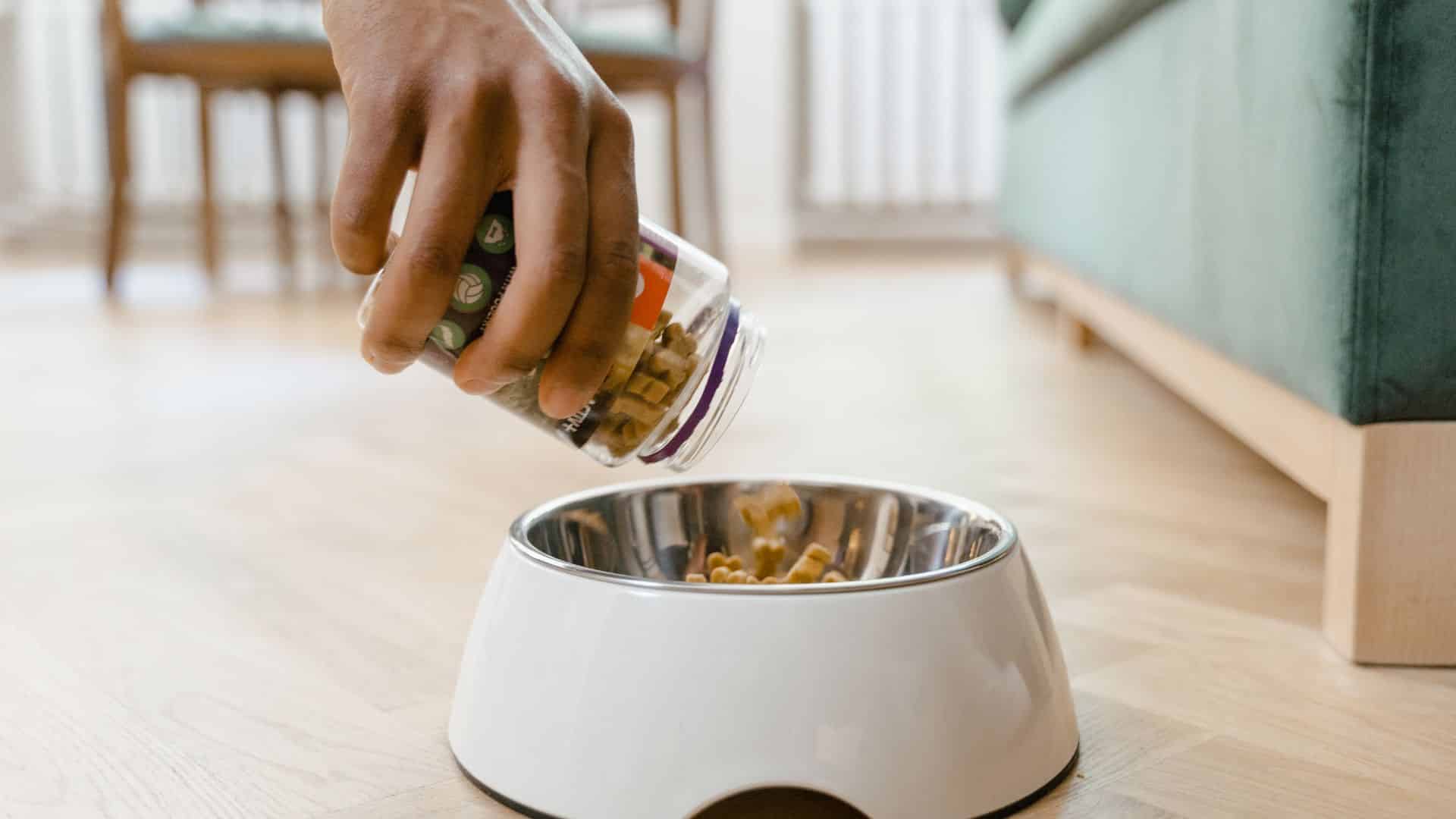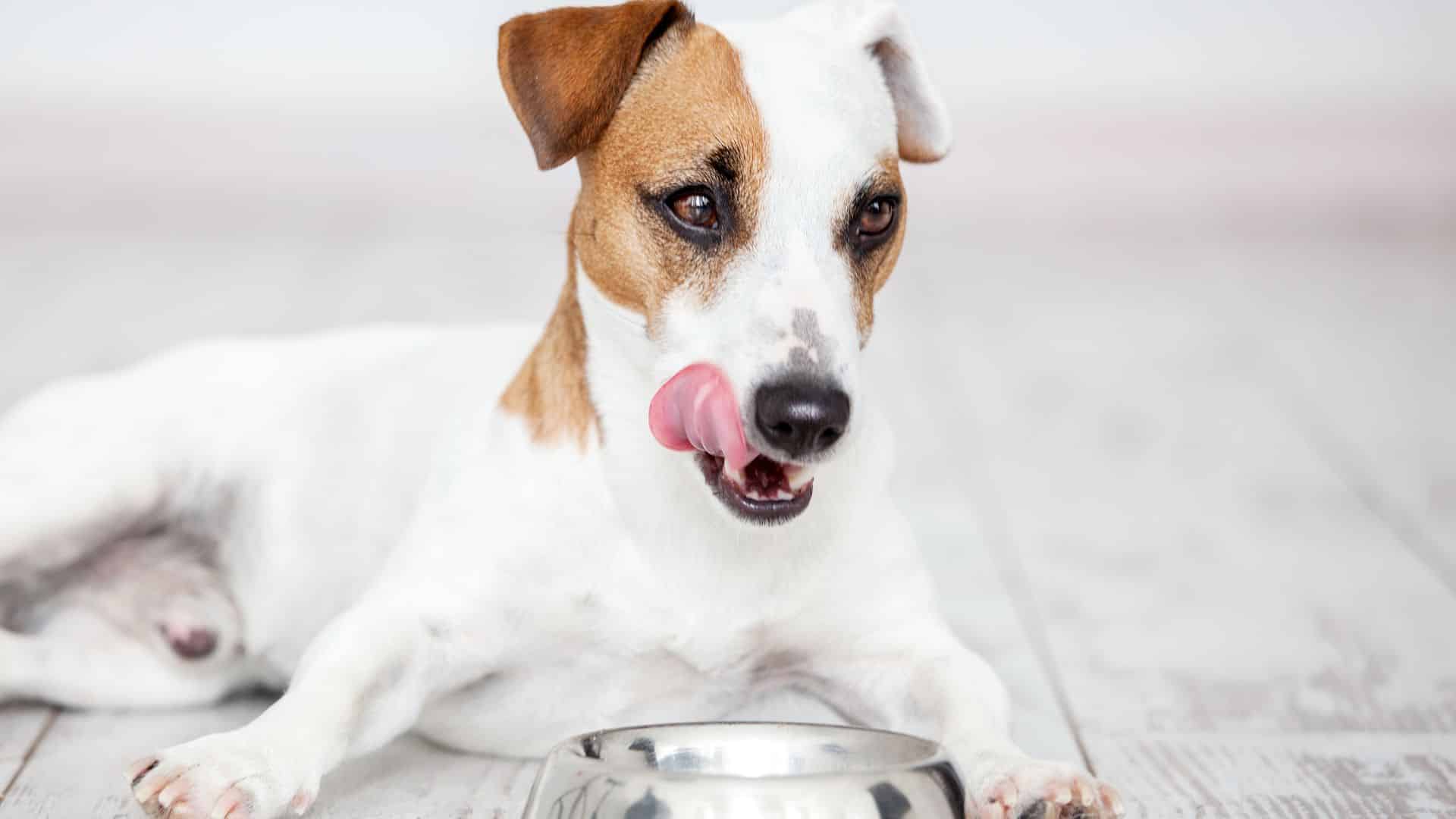If there’s one crucial thing I need to take care of with my dog, it would have to be his food choices. Just like us humans, my pet’s overall health depends on food. From our energy to the way our organ’s function, the food we feed ourselves is an important factor to how we live.
I decided to start doing extensive research to find the best diet for my dog, and I found low sodium dog food. It intrigued me (probably like how it piqued your curiosity as well), so I decided to read about it and try implementing this new diet to my dog as well.
So to help you out, I show you an extensive guide to help you learn all about low sodium pet food and how it can help your furry friend!
What is Low Sodium Dog Food?
You may have already heard of low sodium, which is a low-salt diet consisting of natural food that helps balance your electrolytes and nerve function. Dogs also need a balance of sodium in their bodies. And though it’s an essential mineral, too much or too little of it can be detrimental to one’s health.
The low sodium recipe is suitable for dogs who suffer from too much sodium. These are dogs who are at risk or suffer from heart failure and high blood pressure. Most of the time, older dogs or ones that have heart disease run in the family will need a low sodium recipe. There are functional dog foods you can either purchase from local pet stores or one you can make yourself for better flavor.
Either way, a low sodium diet for dogs is essential, but you will need to consult a veterinarian and see if your dog will need the diet. Again, low sodium is good, but little to no salt in your body will equal to low blood pressure and other conditions in the long run.
How to Know If Dog Needs Low Sodium Diet

Dogs who suffer from high sodium levels may have a condition called Hypernatremia. Sodium is an essential mineral, an electrolyte that helps your blood pressure and nerves properly function.
But because of the high concentrations of sodium flowing in your dog’s bloodstream, they begin to lose water and eventually end up suffering from abnormal blood pressure or an increased risk of heart conditions.
Your dog may also end up injuring his digestive system. You will know if your dog suffers from Hypernatremia, or signs of higher sodium levels in his body, if he shows the following symptoms:
- Suddenly more thirsty
- Looks and feels confused or disoriented
- Seizures and coma
- Vomiting or diarrhea, any cause for water loss
- Excessive urine
- Low or excessive water intake
- Eating or drinking more sodium (which is rare)
If your dog suffers from these symptoms, then he must be taken to a veterinarian immediately to get tested. Your dog will then have to follow a diet low in salt or sodium right after.
But why do these conditions happen to dogs anyway? The primary cause would have to be the excessive sodium intake. It can come from eating human or dog food high in sodium, or an unfortunate case of salt poisoning.
Another reason why your dog may need to follow a low-sodium recipe would be from the heat or lack of water consumption. Genetics can play a part here as well. Either way, if your dog happens to suffer from high sodium, then he should begin to lower it down through changing his diet and drinking more water immediately.
Take note that while our average sodium intake shouldn’t go over 2,000mg a day, a dog shouldn’t go over 100mg a day (based on 33-pound dogs). So the ideal sodium intake for a dog would depend on his size, weight, and breed.
And again, take note that your dog also needs sodium. If your dog happens to be healthy and with balanced sodium, no matter the age, then he may just need maintenance. Again, you can consult the veterinarian for consultation and recommendations.
Benefits of a Low Sodium Diet for Your Dog

You now know what high sodium can do to your dog, which is why you need to lower it down. But what else does a low-sodium recipe have to offer other than the prevention of Hypernatremia?
Decreases High Blood Pressure
Since an adequate amount of sodium can help regulate your circulatory system, it will play a huge role in your dog’s blood pressure as well. If your dog suffers from high blood pressure, then a nutritionally balanced diet will help lower it down, which doesn’t only prevent an attack, but heart conditions such as strokes.
Prevents Heart Disease or Organ Failure
Salt absorbs water. If your dog consumes too much of it, he becomes thirsty and will drink as much water as he can to quench his body. As a result, he ends up peeing, even more, to process the excess salt and water drunk.
Through the excessive urinating, it may end up swelling his kidneys and circulatory system. It’s the reason why your dog begins to vomit or have diarrhea.
Through a high protein diet, your dog won’t suffer from any form of kidney or organ failure. It also helps your blood circulate better, lessening the chances of heart disease.
Decreases Risk of Osteoporosis
Low sodium is vital for those who suffer from poor nerve or muscle function. When reducing your salt intake, your dog will enjoy a smaller chance of getting osteoporosis, a bone disease that affects the way he moves.
Having a complete and balanced nutrition will also improve his muscle strength. Through better strength, he can move around better despite his age or size.
Different Types of Low Sodium Dog Foods

Low sodium pet food has the one goal of providing food low in salt. But there are different kinds you can choose from, according to your pet’s preference, and it differs according to texture:
Dry Dog Food
They are known as kibbles, literally dried food with more of a crunch. These low sodium dry dog food packages are the most popular types of dog food available.
They are inexpensive, can be found at any pet store, and they are less messy for dogs to eat (and you to clean). However, they may be difficult to chew.
Wet Dog Food
This is also a low sodium canned dog food, as most wet food would either come in a can, homemade, or in packets. Wet dog food has a more liquid consistency that’s easy to chew and swallow. It’s known that wet food will help hydrate your pooch better.
Studies have also shown that wet food may have better nutrition (higher fat and protein with fewer carbs), making it beneficial for your pup. But take note that it may make more of a mess on the floor when your dog eats sloppily. Also, canned dog food is more expensive.
I would recommend this type of pet food for older dogs or those who have poor teeth health. It’s easy to chew and swallow, alleviating the discomfort or pain.
Low Sodium Dog Food Recipes
If you don’t want to purchase pet food from the pet store, you can make your low sodium food right at home! It’s all-natural, and you know exactly what your furry friend is eating.
So if you want to use your ingredients, here are the low sodium food recipes you can follow:
Beef and Potatoes
- Eight ounces of cooked lean ground beef (the weight should be according to the RAW beef measurements)
- Three cups of boiled potato (with the skin)
- Five bonemeal tablets or powder (Or 1.25 teaspoon of bonemeal powder)
- One vitamin-mineral tablet
Chicken and Potatoes
- A cup of chicken breast (cooked)
- Three cups of boiled potato (with the skin)
- Four bonemeal tablets (Or a teaspoon of bonemeal powder)
- A vitamin-mineral tablet
All you need to do is to mix all these ingredients together and serve it in your dog’s food bowl for him to devour. They all have an adequate amount of protein and fat, without the excess sodium.
These recipes contain about 600-800 calories on average, which is enough for a medium-sized pet. Feed your pet once or twice a day and pair it with exercise, and he’ll stay a healthy and happy pet!
Take note that the ones with potatoes are higher in potassium as compared to using rice. If you want your pet to have a diet lower in potassium, then you can exchange the potatoes with two cups of cooked, long-grain rice. As for the vitamins, make sure that it was prescribed or recommended by your pet’s veterinarian.
How to Purchase the Best Low Sodium Dog Food
If you want to buy low salt food, you can find a lot on sale in local pet stores or reputable online shops. But because there are a lot of brands to choose from, you might be confused when deciding which one is right for your canine friend. Here are some tips and factors to consider when purchasing pet food low in table salt:
Type
I mentioned earlier about the two main types of pet food. What does your pet prefer? If he has sensitive teeth or can’t chew properly, the go for wet dog food. Otherwise, try dry kibbles and see how he likes it.
Dog’s Age and Size
You can find food low in sodium suitable for a pet’s age, may it be for puppies or adults. The size of your pup may also affect the food you’ll buy, since he may need a bigger serving or have different nutritional needs.
Flavor and Nutritional Value
There are a lot of pet foods that come in various flavors, namely chicken or beef. Choose one your puppy has liked even before changing his diet.
Also, always check the label and focus on the sodium. It may vary per brand, so choose one with the recommended amount of sodium as requested by your pet’s veterinarian.
Package and Pricing
Price matters, so choose one with a good package and size that will last for at least a week to avoid the hassle of having to go to the store to purchase more.
Tips on How to Feed Your Dog a Low Salt Diet
Now that you know how to choose and make the best type of low sodium dog food (and what to avoid), how can you help your pet transition to a low salt diet?
It may be difficult, considering that your pet may not like the lack of flavor or the huge change. But here are some tips to help you out:
Slowly Ease Into the Transition
Just like us when we go on a new diet, we can’t just change ALL our meals into something entirely different. Start off with either one meal, or replace some of your dog’s regular food with the low sodium one. Begin to incorporate more of the low sodium food into each of your pet’s meals until he gets used to the change.
Mix and Match
If your puppy can’t seem to eat properly but still prefers dry kibbles, then you can add wet food for more nutrition and consistency for him to chew quickly. It can also help add more flavor and fun into eating.
Encourage and Reward Him
We all need a support system when transitioning to a new diet. After your furry friend finishes a whole meal, you can reward him with walks or cuddles. It can encourage him to stick to his diet. Also, a low sodium treat every once in a while may help as well.
The High-Sodium Foods Dogs Should Avoid
You can purchase low sodium dog food in pet stores or even make your own. But what are the foods you must avoid giving your pooch to prevent a spike in his salt levels? Here’s an extensive list of what to avoid:
MSG
MSG is a HUGE no-no for dogs! It contains a lot of sodium and preservatives that would detriment his overall health, and not just his blood pressure!
It’s also an allergen and comes in a lot of processed foods. Avoid feeding your dog any fast food or junk that contains the stuff. Go for natural flavoring for low sodium pet gravy to give your puppy instead.
Nitrates
Nitrates are preservatives to help extend the lifespan of many meat products. You can find them in bacon, hot dogs, deli meats, or ham. Also called nitrites, it has a LOT of salt that may cause a blood disorder and a spike in their sodium levels. I recommend to stop feeding your pup processed meats and to stick to his dry or wet food.
Salted Chips or Pretzels
Or anything that contains salt. This is the most visible types of food you should avoid giving your pooch since anything drizzled with salt has a HUGE sodium content. It won’t affect only your dog’s health, but yours as well.
Instead of sharing that bag of chips with your pet, go for his low sodium treats instead.There are a lot of other things you shouldn’t feed your pup such as processed sugar, salted nuts or raw meat.
It may cause spikes in insulin levels or heighten his risk of food poisoning and salmonella. To be safe, always stick to his food and treats. Avoid sharing your food with the family dog at all costs.
Last Updated on 16/03/2025 by Karen Snow
Hi! I’m Karen and a certified dog lover. As a freelance writer and blogger, I do my best to squeeze in some time with my dogs, learning more about the way they act and how I can make sure that they continue to stay well-cared for by yours truly.
My dogs have helped me through a lot, and this is my way of giving back to them! Besides animals, I also love to travel and cook, having explored my country’s restaurants and unique places. Follow me as I show you all the amazing tips and bits of information I learn along the way about our furry friends!

What’s Taking place i am new to this, I stumbled upon this I have found It absolutely helpful and it has helped me out loads. I hope to contribute & assist different users like its aided me. Good job.